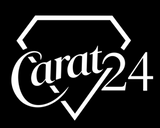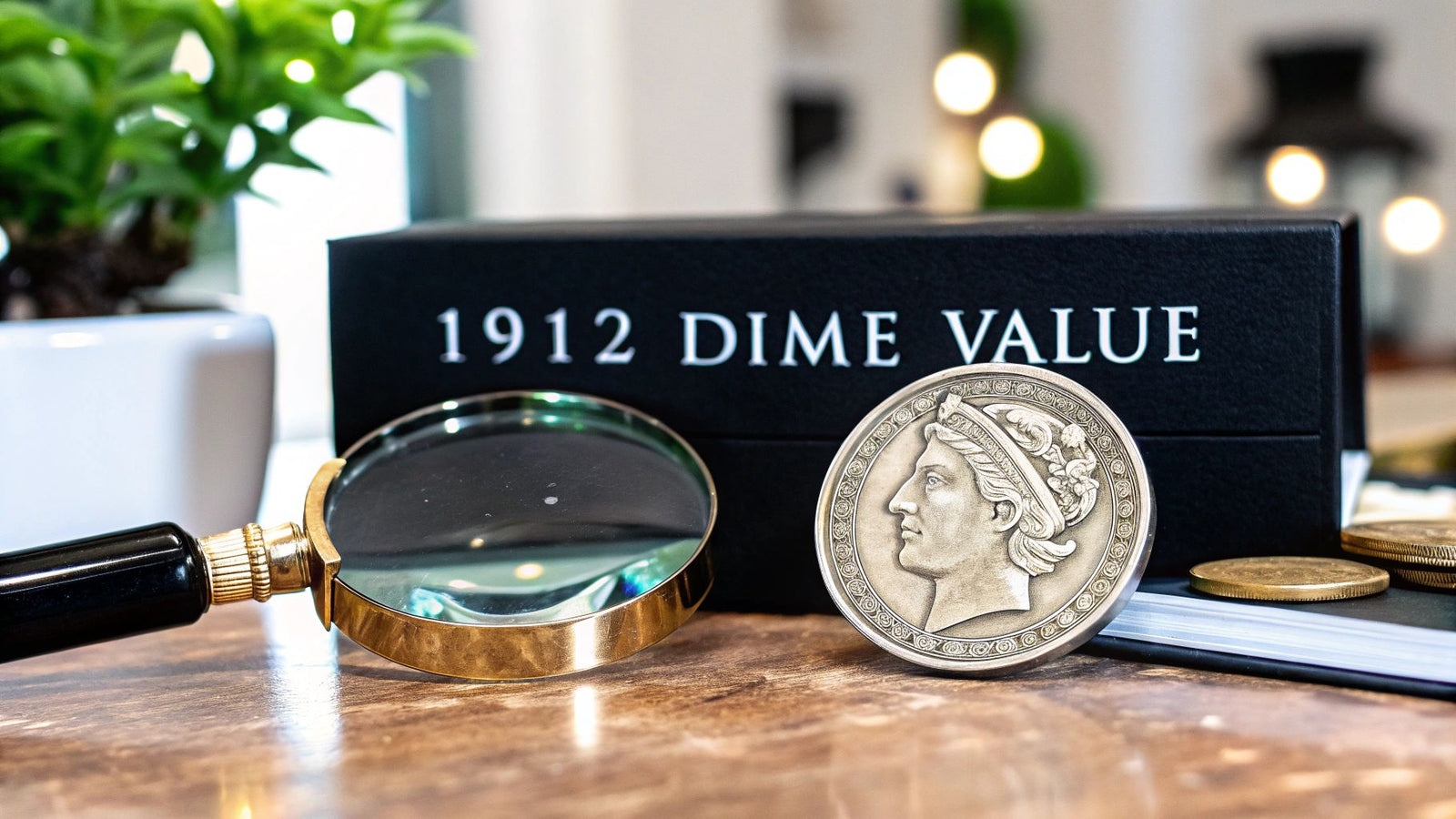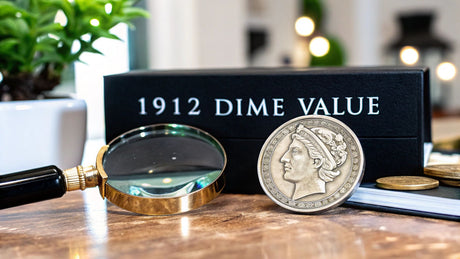So, you've got a 1912 dime. What's it worth? The answer can be anything from a few bucks for its silver melt value to well over $1,000 for a perfectly preserved, uncirculated coin. That huge gap in the dime 1912 value all comes down to three things: its mint mark, its physical condition (or "grade"), and its overall rarity. Think of it this way: while online price guides are a great starting point, getting a professional to look at it is the only way to know what you really have.
Uncovering the Story Behind Your 1912 Dime
That little silver coin you're holding isn't just ten cents—it's a genuine piece of American history. Known to collectors as the Barber Dime, it was designed by Charles E. Barber and minted from 1892 all the way to 1916, representing a classic era in U.S. coinage.
Right off the bat, its composition of 90% silver and 10% copper gives it an inherent value that's much higher than its face value. The year 1912 was an interesting time, smack in the middle of major industrial growth in America. This historical context is key because it helps us understand why so few of these dimes survived in great shape—most were heavily used in daily commerce. That's exactly why well-preserved examples are so prized by collectors today.
Mint Marks: The Key to Rarity
One of the first things a collector looks for is the mint mark, a tiny letter that tells you where the coin was made. The 1912 Barber Dime was struck at three different U.S. Mint locations, and the production numbers varied wildly between them.
- No Mint Mark (Philadelphia): This is the most common variety you'll find.
- "D" Mint Mark (Denver): A bit less common than the Philadelphia coins.
- "S" Mint Mark (San Francisco): The rarest and most valuable of the three.
You'll find this little letter on the reverse (back) of the coin, just beneath the wreath.
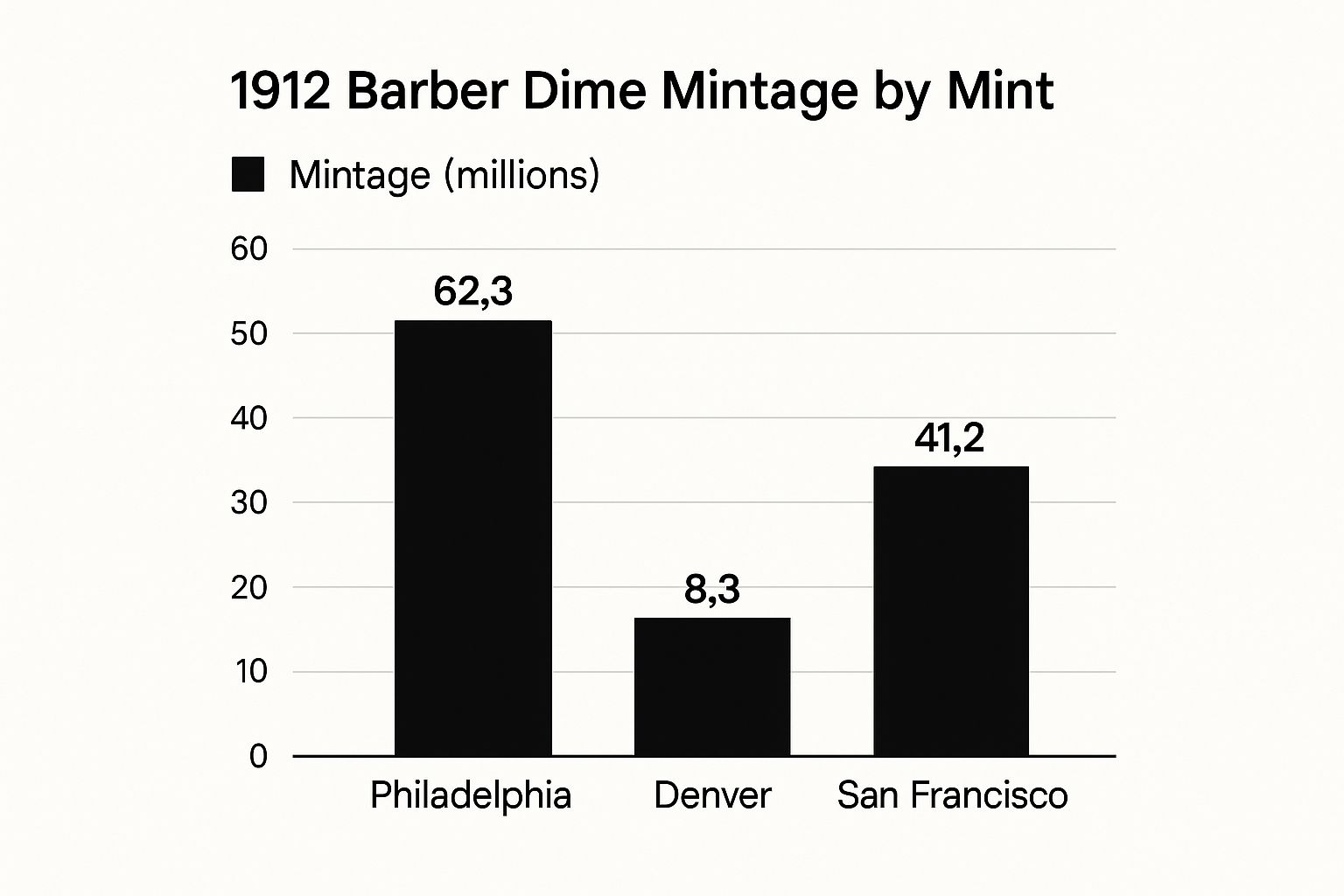
This chart really puts the production numbers into perspective. As you can see, the Denver mint made far fewer dimes that year, which makes the 1912-D a tougher find for collectors. Condition and rarity work hand-in-hand to determine value. For instance, a 1912-D Barber Dime in a professionally graded MS-61 (Mint State) condition could be worth around $320, while a heavily worn one might only fetch $6 to $85. It's a dramatic difference that shows just how much condition matters.
Quick Guide to 1912 Barber Dime Values by Mint Mark and Condition
To give you a clearer picture, here’s a quick breakdown of potential values. Remember, these are estimates, and the actual price can fluctuate based on the market and the specific details of your coin.
| Mint Mark | Good (G-4) | Very Good (VG-8) | Fine (F-12) | Extremely Fine (EF-40) | Uncirculated (MS-60+) |
|---|---|---|---|---|---|
| P (None) | $3 - $5 | $6 - $8 | $10 - $15 | $45 - $60 | $150+ |
| D | $6 - $10 | $15 - $25 | $40 - $60 | $120 - $150 | $320+ |
| S | $4 - $6 | $8 - $12 | $15 - $25 | $75 - $95 | $200+ |
This table illustrates how a coin's journey—from being heavily circulated (Good) to being perfectly preserved (Uncirculated)—dramatically impacts its value, with the Denver "D" mint mark often carrying a premium.
Finding the Mint Mark on Your Barber Dime
That tiny little letter on the back of your dime is one of the biggest factors in figuring out its real value. Think of it as a return address for the coin—it tells you exactly where it was made, which gives you a huge clue about how many were produced. This one detail can be the difference between a coin worth a few bucks and one worth hundreds.
Finding it is simple. Flip the dime over to the "reverse" side, the one with the big wreath of corn, wheat, and oak. Look right at the bottom, just underneath the bow tying the wreath together.
You're searching for one of two possible letters:
- A "D" means it was struck at the Denver Mint.
- An "S" means it came from the San Francisco Mint.
What if you don't see a letter? Don't worry, nothing is missing. That just means your dime was made at the main U.S. Mint in Philadelphia, which didn't use a mint mark on dimes back then.
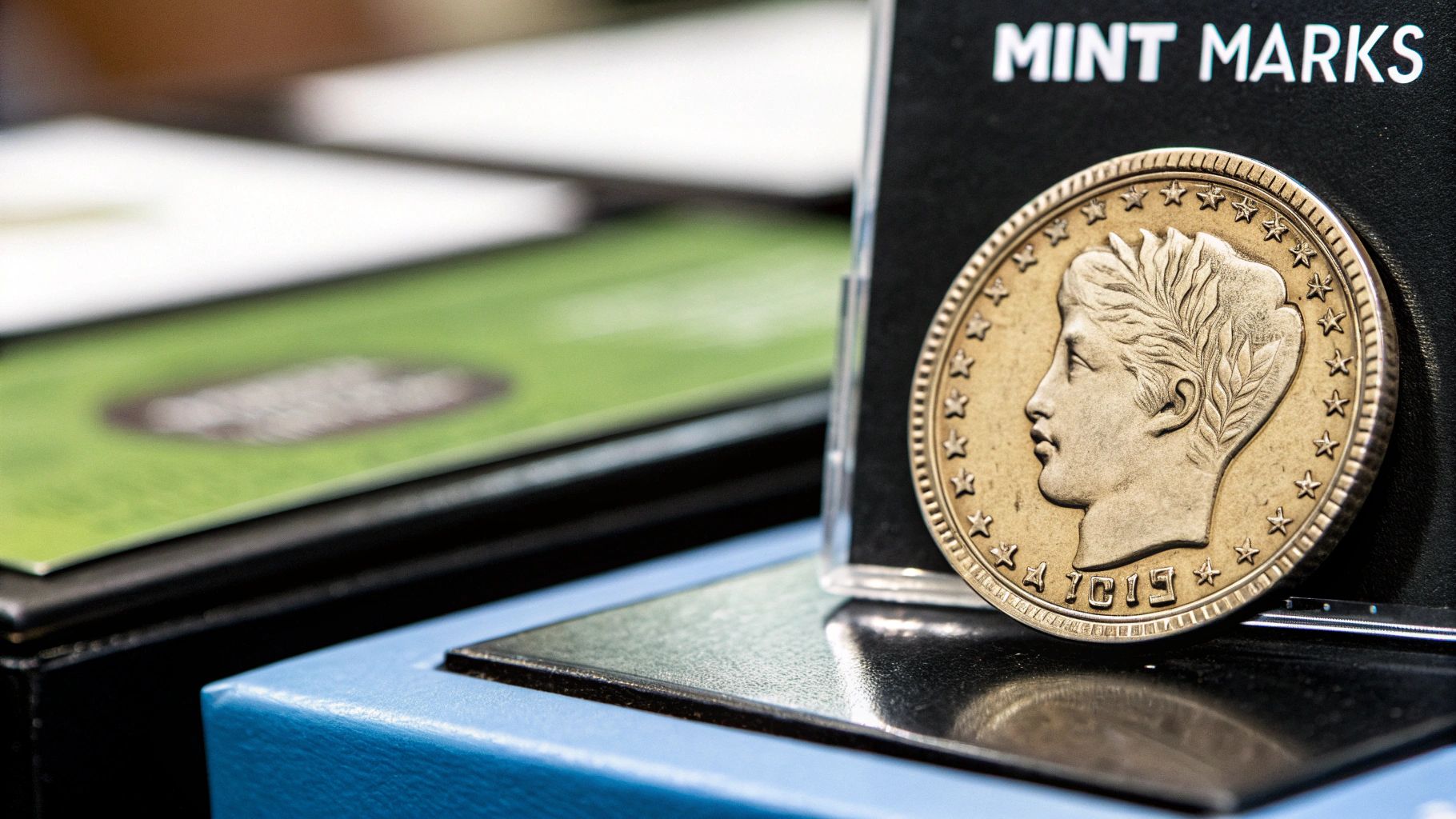
Why This Tiny Letter Matters So Much
So, what's all the fuss about one little letter? It all boils down to mintage numbers—basically, how many coins each mint facility actually produced that year.
Philadelphia was the workhorse of the U.S. Mint, pumping out the most dimes by a long shot. This makes them the most common and generally the least valuable from a collector's standpoint. Denver and San Francisco, on the other hand, made far fewer.
The 1912-S Barber Dime is the scarcest of the bunch, making it the one collectors really chase after. Just to give you an idea, a 1912-S dime in Extremely Fine condition might fetch anywhere from $35 to $90. In contrast, that same coin in a heavily worn Very Good condition could be worth around $6. It’s a perfect example of how that tiny "S" can dramatically boost your coin's value.
No matter if your coin is a common Philadelphia issue or a rare San Francisco piece, its silver content gives it a solid base value. For a deeper look into this, our guide on identifying valuable coins from 1964 and earlier can help you spot other treasures you might have.
Turning Your Discovery into Cash
Once you've located the mint mark, you have a much clearer picture of your dime 1912 value. But remember, online price guides are just that—guides. To get the highest payout in Boise, you really need a professional to take a look.
Forget the risk and hassle of mailing your valuables to some faceless online buyer. When you sell locally, you can save the hassle and sell locally for more than online shipments.
At a trusted local expert who specializes in Gold and Jewelry Buying, you get straightforward, hassle-free offers right on the spot. We even provide services like free Xray scanning and Gold testing for free to accurately assess everything you bring in. With our price matching guarantee, you can feel confident you’re getting the absolute best price for your piece of history.
How to Judge Your Coin's Condition
Grading a coin can feel like a complex science, but at its heart, it’s really about reading the story of its journey. Think of your 1912 dime like a classic car. A daily driver that’s been on the road for decades is going to have some dings, scuffs, and faded paint. A showroom model, on the other hand, looks just like it did the day it rolled off the line.
This same idea applies directly to your coin's condition, and it's the single biggest factor in determining its value.
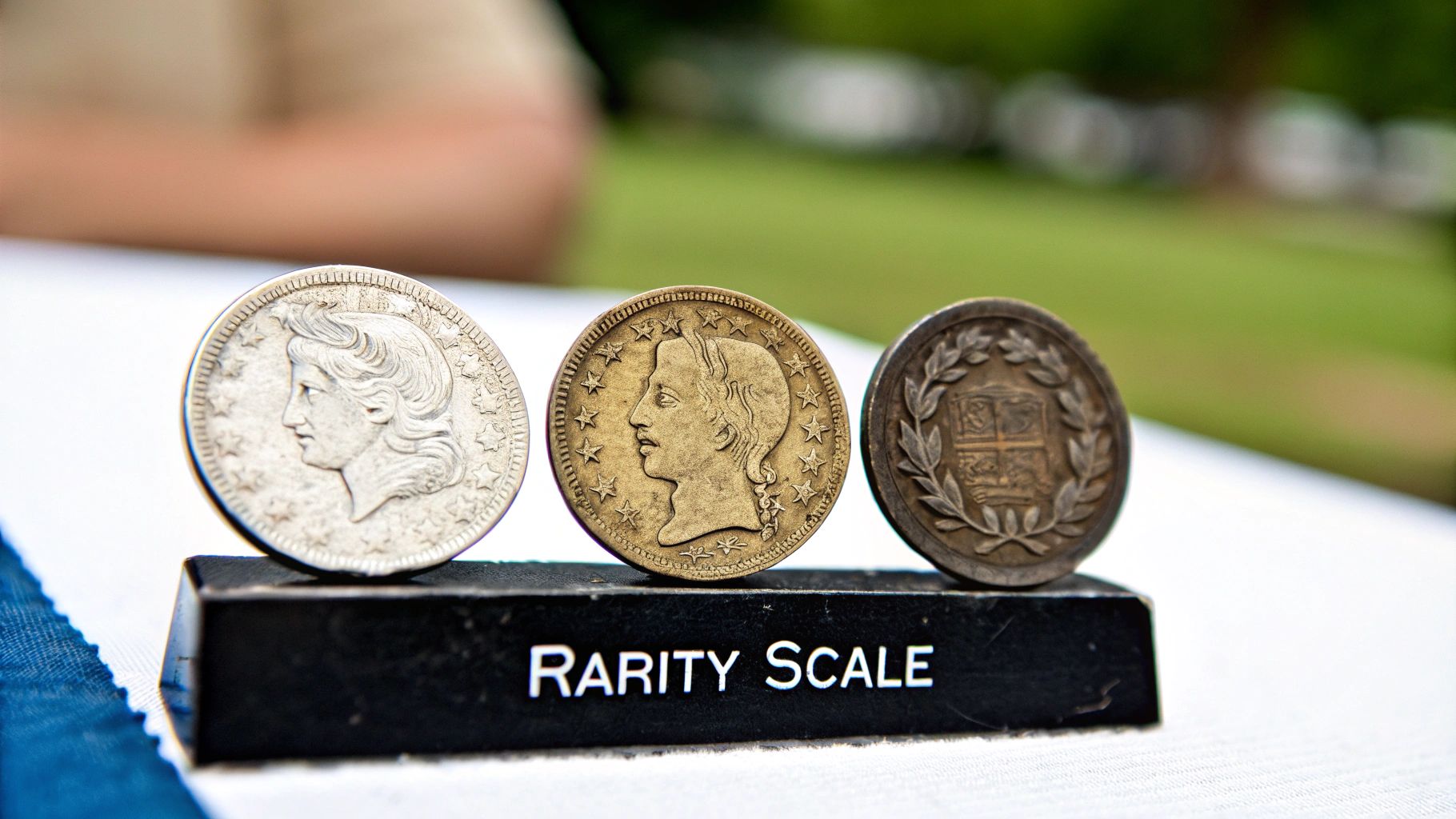
Let's demystify the grading process. My goal here is to give you the confidence to make a solid initial assessment of your own coin. Instead of just rattling off technical terms, we'll walk through the different stages of a coin's life, from heavily used to perfectly preserved.
From Good to Extremely Fine: A Coin's Life Story
Most 1912 dimes saw heavy circulation, passing through thousands of hands over the years. These are the coins that fall into the lower grades, but don't count them out—they still hold value.
- Good (G-4): This is the "well-loved" daily driver of the coin world. On a coin in this condition, the main designs are flat but you can still make them out. You'll see the outline of Lady Liberty’s head, but the word "LIBERTY" on her headband will be completely worn away.
- Fine (F-12): Think of this as a car with a few more details intact. Some of the letters in "LIBERTY" might be partially visible, and you can see more defined outlines in the wreath on the back.
- Extremely Fine (EF-40): Now we're getting to a coin that was likely saved early in its life. The details are much sharper. "LIBERTY" is fully readable, and you can see clear details in Liberty’s hair and the individual leaves of the wreath.
A small jump in grade, like from Fine to Extremely Fine, can cause a massive leap in a 1912 dime's value. This is simply because well-preserved examples are so much harder to find, making them far more desirable to collectors.
The Peak of Preservation: Mint State Coins
The ultimate prize for any collector is an "Uncirculated" or "Mint State" (MS) coin. This is that showroom-perfect classic car that was never actually driven. These coins look just as they did the day they left the mint, with absolutely no signs of wear from circulation.
The key feature of a Mint State coin is its original mint luster. This isn't just shininess; it's a unique, frosty sheen that seems to cartwheel across the coin's surface when you tilt it under a light. This luster is the very first thing to wear off in circulation, so its presence is a dead giveaway that you're holding an uncirculated coin.
Even the slightest friction can dull it, which is why a pristine 1912 dime is so rare and valuable. Understanding these fine distinctions is what separates a casual enthusiast from a serious collector. If you're curious about how local experts evaluate pieces like this, you can learn more about the thriving numismatic community in our article on Executive Coins in Meridian Idaho.
Decoding the Market for Barber Dimes
A coin's value isn't a static number you can just look up in a book; it's a living, breathing figure that shifts with the market. Getting a handle on these forces is the real key to understanding the true dime 1912 value. The final price tag on a Barber Dime comes from a mix of collector demand, the daily price of silver, and what similar coins have recently sold for at auction.
Think of it as a tiny stock market for historical artifacts. If a new wave of collectors suddenly takes an interest in Barber Dimes, or if silver prices shoot up, you'll see values climb. On the flip side, a quiet market can cause prices to dip. It’s a constantly moving target where knowing what’s happening and when to act is everything.
The Exponential Jump in Value
One of the most fascinating things about the coin market is how value can absolutely explode as the condition improves. A heavily circulated 1912 dime that’s seen better days might only trade for a few bucks over its silver value. But a professionally certified Mint State example—a coin that looks like it just left the mint yesterday—can fetch hundreds or even thousands of dollars.
Why the massive price gap? It all comes down to scarcity. Millions of these dimes were originally minted, but almost all of them were used for everyday purchases, getting worn down in the process. Finding one that somehow escaped circulation is like finding a needle in a haystack, and collectors will pay a huge premium for that incredible level of preservation.
The Role of Professional Grading
In the world of collectibles, trust is everything. That’s where professional grading services like the Professional Coin Grading Service (PCGS) and the Numismatic Guaranty Corporation (NGC) step in. They’re the impartial, third-party referees of the coin world.
When you get a coin graded, an expert carefully assesses its condition, confirms it's genuine, and seals it in a protective, tamper-proof holder. This certification instantly turns your collectible into a trusted asset with a clearly defined quality, making it far easier to buy and sell with confidence.
The market's reliance on these grading standards ensures everyone is on the same page and helps keep pricing consistent. For local insights and market updates, you can explore more coin collecting topics on our Boise coin and bullion blog.
A quick look at sales data shows just how much a professional grade matters. Ungraded 1912 Barber Dimes might sell for around $5.49, but near-perfect graded examples have sold for over $7,200 and even $9,000. You can discover more about these impressive market trends on PriceCharting.com. The value climbs dramatically with each step up the quality ladder, proving just how much collectors prize pristine coins.
This makes getting a professional, hassle-free evaluation essential. Instead of dealing with the uncertainty and risk of shipping your valuables, you can save the hassle and sell locally for more than online shipments and get the highest payout in Boise. We offer Xray scanning and Gold testing for free, plus price matching to guarantee you get the best possible offer.
Get the Highest Payout for Your 1912 Dime in Boise
You’ve done the hard part—you've identified your 1912 dime, figured out its mint mark, and have a good idea of its condition. So, what’s next? The logical step is turning that little piece of history into cash. When you’re ready to sell, you want a process that’s straightforward, trustworthy, and gets you the best possible price.
While those online mail-in services might look convenient at first glance, they often come with hidden risks and disappointing offers. Think about it: shipping your valuable coin means losing control. You’re left worrying about it getting lost or damaged in transit, only to face an uncertain appraisal from someone you've never met. Many sellers have told us their initial online quote magically shrinks once the coin is in the buyer's hands, leaving them with a lowball offer and the headache of trying to get their coin back.
The Advantage of Selling Locally
There's a much better way. To save the hassle and sell locally for more than online shipments, nothing beats an in-person transaction.
Working with a local expert right here in Boise gives you a secure, transparent, and immediate experience. You get to watch the entire evaluation, ask questions, and understand exactly how the dime 1912 value is determined. There are no smoke and mirrors.
A reputable local buyer offers some serious perks:
- Instant Payout: No waiting for a check to arrive or a bank transfer to clear. You walk out with payment in hand, simple as that.
- No Shipping Risks: Your coin never leaves your sight. This completely eliminates the stress and uncertainty that comes with mail-in services.
- Face-to-Face Expertise: You can build real trust with a professional who understands the subtle details of your coin's worth beyond just its silver content.
Why Choose a Gold and Jewelry Buying Expert
So, where should you go? The best place to sell a classic silver coin like the 1912 Barber Dime is a trusted Gold and Jewelry Buying specialist. Pawn shops often just see the silver melt value. A true numismatic expert, on the other hand, recognizes the full collector value based on its rarity and condition. They know your coin is more than just 0.0723 troy ounces of silver; it’s a sought-after collectible with a story.
At a professional buyer, you get a comprehensive evaluation. We offer Xray scanning and Gold testing for free to accurately assess all your precious items. This ensures you get a fair and precise offer for everything you bring in.
Our commitment is to give you the highest payout in Boise with hassle-free offers. We're so confident in our pricing that we even offer price matching, guaranteeing you receive the best possible value for your treasures. This transparent approach is designed to empower you, so you can sell with complete confidence.
Selling locally means you get expert knowledge without any of the risks of shipping your valuables off to who-knows-where. For more detailed information on identifying and valuing different types of coins, feel free to explore our complete guide to coins and bullion information.
Skip the uncertainty. Get paid more, instantly, by choosing a trusted Boise expert.
Common Questions About 1912 Dime Values
After digging into the history, mint marks, and grading of the 1912 Barber Dime, a few questions always seem to pop up. Let's tackle them head-on so you can feel confident and fully informed about your coin's potential before you even think about selling it.

What Is the Silver Melt Value of a 1912 Dime?
Every 1912 Barber Dime contains about 0.0723 troy ounces of pure silver. That gives it a base "melt value" tied directly to the daily price of silver. However, selling it for just its weight in silver would almost always be a mistake. Doing so completely ignores its historical significance and collector value.
Even a heavily worn 1912 dime has a numismatic value that outstrips its silver content. To get the best price, you need an expert who sees the whole picture—the coin's grade, where it was minted, and its appeal to collectors—not just a number on a scale. You can see how precious metal prices move by checking out our recent precious metals price updates.
Is My 1912 Dime Considered Rare?
Rarity is a dance between two things: its mint mark and its condition. Think of it like this:
- 1912-S (San Francisco): This is the one to look for. With the lowest mintage of the year, a 1912-S dime is a prize in almost any condition.
- 1912-D (Denver): Less common than its Philadelphia counterpart, the Denver mint mark carries a nice premium.
- Any Uncirculated Dime: A 1912 dime that never saw a day of circulation is genuinely rare. Most of these coins were spent, saved, and handled for decades, so finding one in Mint State condition is a true discovery.
Of course, the only way to know for sure where your coin falls on the rarity spectrum is with a professional, in-person appraisal.
Should I Clean My 1912 Dime Before Selling It?
Absolutely not. This is hands-down the most common—and most costly—mistake a new collector can make. No matter how gentle you are, cleaning a vintage coin strips away its natural toning, or patina, and leaves behind microscopic scratches that permanently scar its surface.
Collectors can spot a cleaned coin from a mile away. It immediately torpedoes the value, often by 50% or more. To get the highest payout in Boise, always bring your coins to an expert exactly as you found them—untouched and original.
Where Can I Get My 1912 Dime Appraised in Boise?
For a trustworthy and accurate appraisal, your best bet is to visit a respected local coin and Gold and Jewelry Buying expert. This gives you a secure, face-to-face evaluation, letting you save the hassle and sell locally for more than online shipments. A local specialist provides a transparent process and hassle-free offers.
Look for a buyer who offers complimentary services like Xray scanning and Gold testing for free to ensure a precise assessment. A reputable expert will also stand behind their offer with a price matching guarantee, giving you total peace of mind that you're getting the best possible price for your piece of American history.
When you're ready to discover the true value of your 1912 dime or any other precious items, visit Carat 24 - Trusted Gold Experts. We provide professional evaluations and the highest payouts in Boise, ensuring you sell with confidence. Find out more at carat24boise.com.
